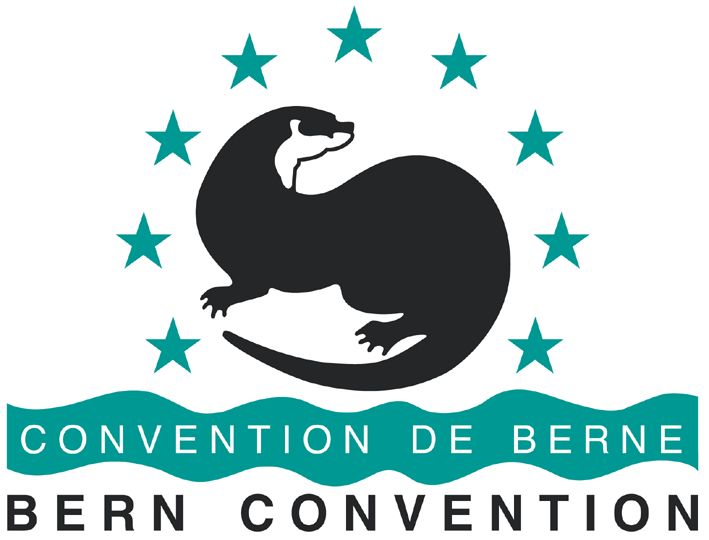The participants will address the challenges that protected areas face in an interconnected world, and exchange experiences and ideas on: the use of information technologies and citizen science for sustainable conservation of areas of importance for biological diversity; how climate change, globalisation and invasive alien species will change the nature conservation policies and management; and innovative management of protected areas.
A video celebrating the 50th Anniversary of the European Diploma will be officially launched during the Opening session.
Workshop information
- Programme of the Workshop
- Pisa declaration
- List of participants
- Summary of the workshop and presentation of the conclusion, Mr Hervé Lethier, expert
Presentations
- Opening speech on behalf of the Ministry of the Environment, Land and Sea, Mr Felice Cappelluti, Technical Officer, Ministry of the Environment, Land and Sea
- Introduction of the workshop by the key speaker, Mr Michael Usher, ecologist: Protected Areas: the last 50 years and challenges for the next 50 years: “The European Diploma for Protected Areas: Yesterday, Today and Tomorrow”
- Presentation of the working methods by the Rapporteur general, Mr Hervé Lethier, expert
Session 1 : Applying new technologies and communication challenges to Protected Areas (Citizen Science communication, Networking Protected Areas, Networking knowledge)
- Introduction of the theme by the moderator, Ms Carol Ritchie, Executive Director, EUROPARC Federation
- Case study 1: Ms Jane Chapman, Assistant director, Peak District National Park, and Ms Sarah Proctor, Project Manager, Community Science Project, Moors for the Future Partnership, United Kingdom: “Communicating Citizen Science: Moors for the Future Partnership’s Community Science Project”
- Case study 2: Mr Valery Iukovich, Deputy Director for scientific and research work, Berezinsky State Biosphere Reserve, Belarus: “How networking knowledge contributes to conservation and sustainable development of protected areas: a case of Berezinsky (Belarus), Kampinoski (Poland), and Northern Vosges (France) biosphere reserves”
- Case study 3: Mr Szarvas Imre, Manager, Ipolytarnóc Protected Area, Hungary: “European Diploma-holding Areas and the Geopark initiative in Hungary”
- Case study 4: Mr Harry Koenders, Public affairs officer, Staatsbosbeheer, The Netherlands: “The role of communication in supporting and protecting nature in the Oostvaardersplassen”
- Case study 5: Mr Marc Roekaerts, Expert, Belgium: “Networking Data, towards Information for many"
Session 2: Management of Protected Areas and climate change: new challenges
- Introduction of the theme by the moderator, Mr Øystein Størkersen (Norway), Chairperson of the Standing Committee to the Bern Convention
- Case study 1: Mr Eladio Fernández-Galiano, Head of the Democratic Initiatives Department, Council of Europe: “New rules to new circumstances: how to adapt international and domestic legislation on protected areas to climate change”
- Case study 2: Mr Robert Brunner, Expert, Austria: "Renewable energy: Benefit or threat for protected areas?"
- Case study 3: Mr Frederik Zwart, District officer, Staatsbosbeheer Frisian Wadden Islands, Boschplaat Nature Reserve, The Netherlands: “Sea Level Rise: Sandy solutions, Solid as a rock?”
- Case study 4: Mr Olivier Biber, Expert, Switzerland: “Birds and climate change”
Session 3: Management of Protected Areas and invasive alien species: new challenges
- Introduction of the theme by the moderator, Mr. Andrea Monaco, researcher, Regional Parks Agency - Lazio
- Case study 1: Mr Joe Sultana, Expert, Malta: “The eradication of the introduced species on Selvagem Islands”
- Case study 2: Mr Antonio Perfetti, Head of Management of Natural Resources Department, Regional Park of Migliarino, San Rossore and Massaciuccoli, Italy: “Reach IAS Control in Mediterranean Coastal Ecosystems”
- Case study 3: Mr Pál Kézdy, Deputy Director, Duna-Ipoly National Park Directorate, and Mr József Vers, Head ranger, Tihany Peninsula, Hungary: “Nature conservation management of European Diploma sites of Hungary, with special regards to the problem of invasive alien species”
- Case study 4: Mr Robert Tanner, Scientific Officer - Invasive Alien Plants, European and Mediterranean Plant Protection Organization (EPPO), France: “Mitigating the impacts of invasive alien plants in the European and Mediterranean Plant Protection region”
Session 4: Innovative management
- Introduction of the theme by the moderator, Dr. Jo Gilbert, Head of Reserves Ecology, Royal Society for the Protection of Birds (RSPB)
- Case study 1: Ms Lucia Venturi, President, Maremma Regional Park, Italy: “The sustainable mobility: the experience in Maremma Park”
- Case study 2: Ms Nihan Yenilmez Arpa, Division Director, General Directorate of Nature Conservation & National Parks, Turkey: “Management of the protected areas in Turkey”
- Case study 3: Ms Maria Husslein, Head of visitors’ management, Bayerischer Wald National Park, Germany: “Socio-economic studies in the Bavarian Forest National Park”
- Case study 4: Ms Roberta Latini, Biologist, Abruzzo, Lazio and Molise National Park, Italy: "New perspectives in the coordinated management of a protected species: the case study of the Apennine chamois"
- Case study 5: Mr Michael Schimek, Manager, Wachau Protected Landscape, Austria: “The pros and cons of voluntary site management”



